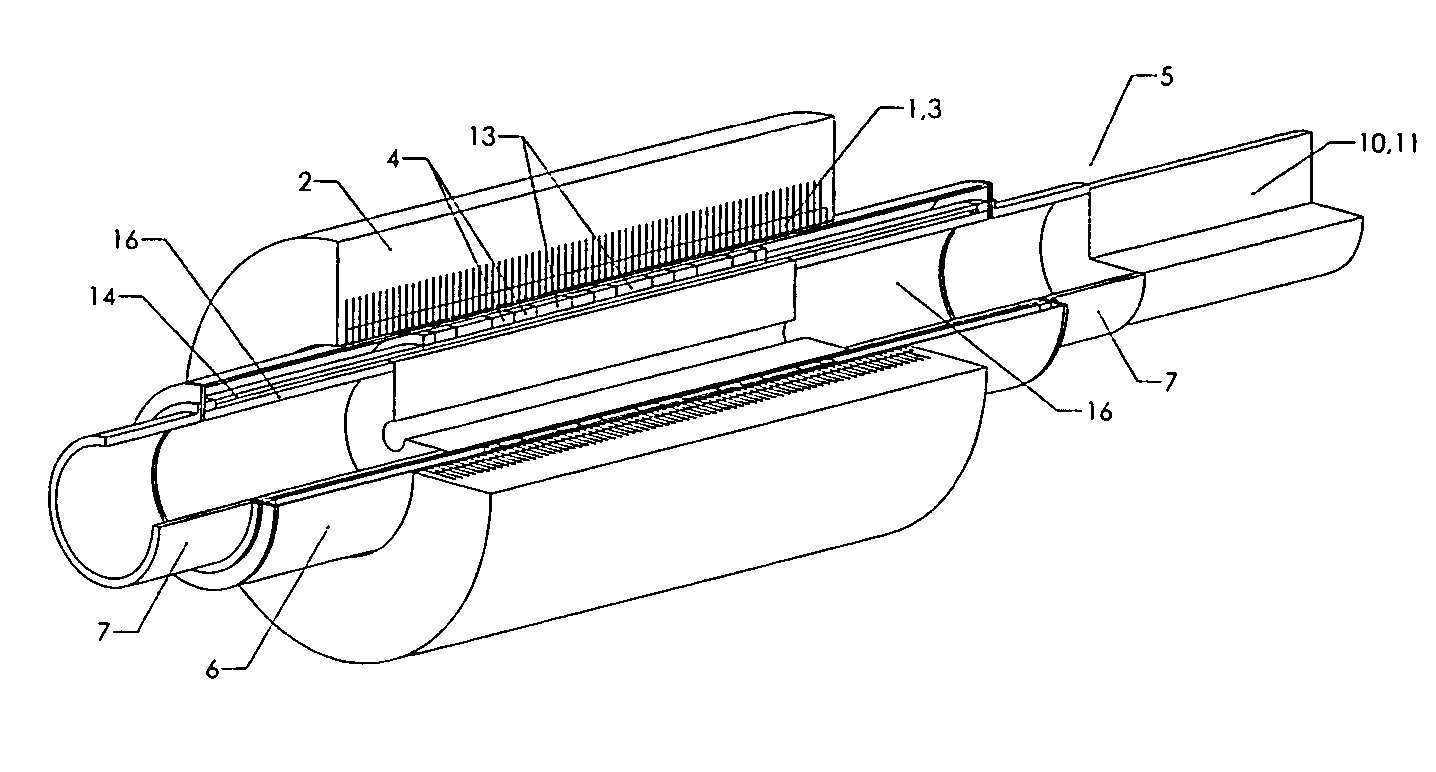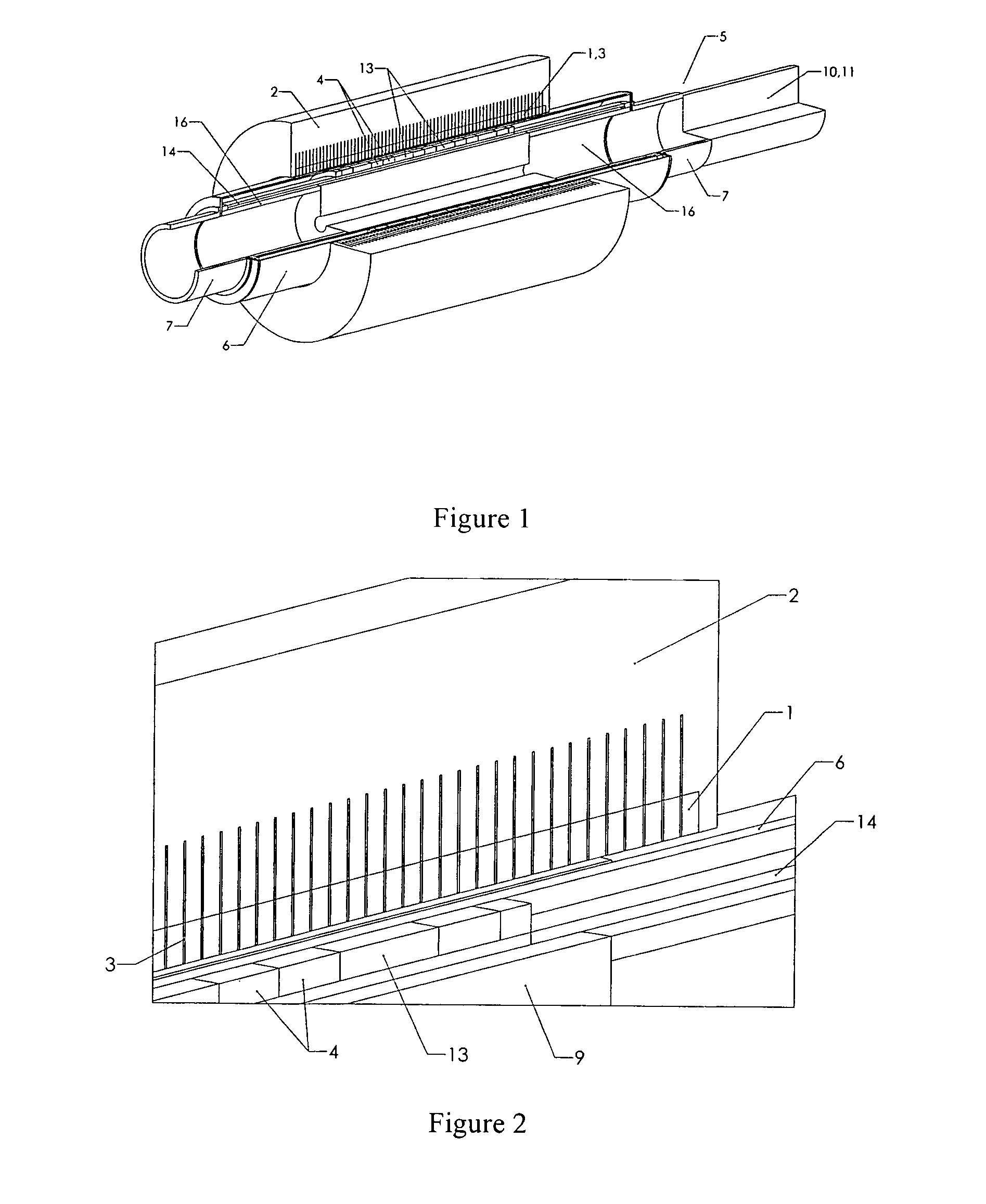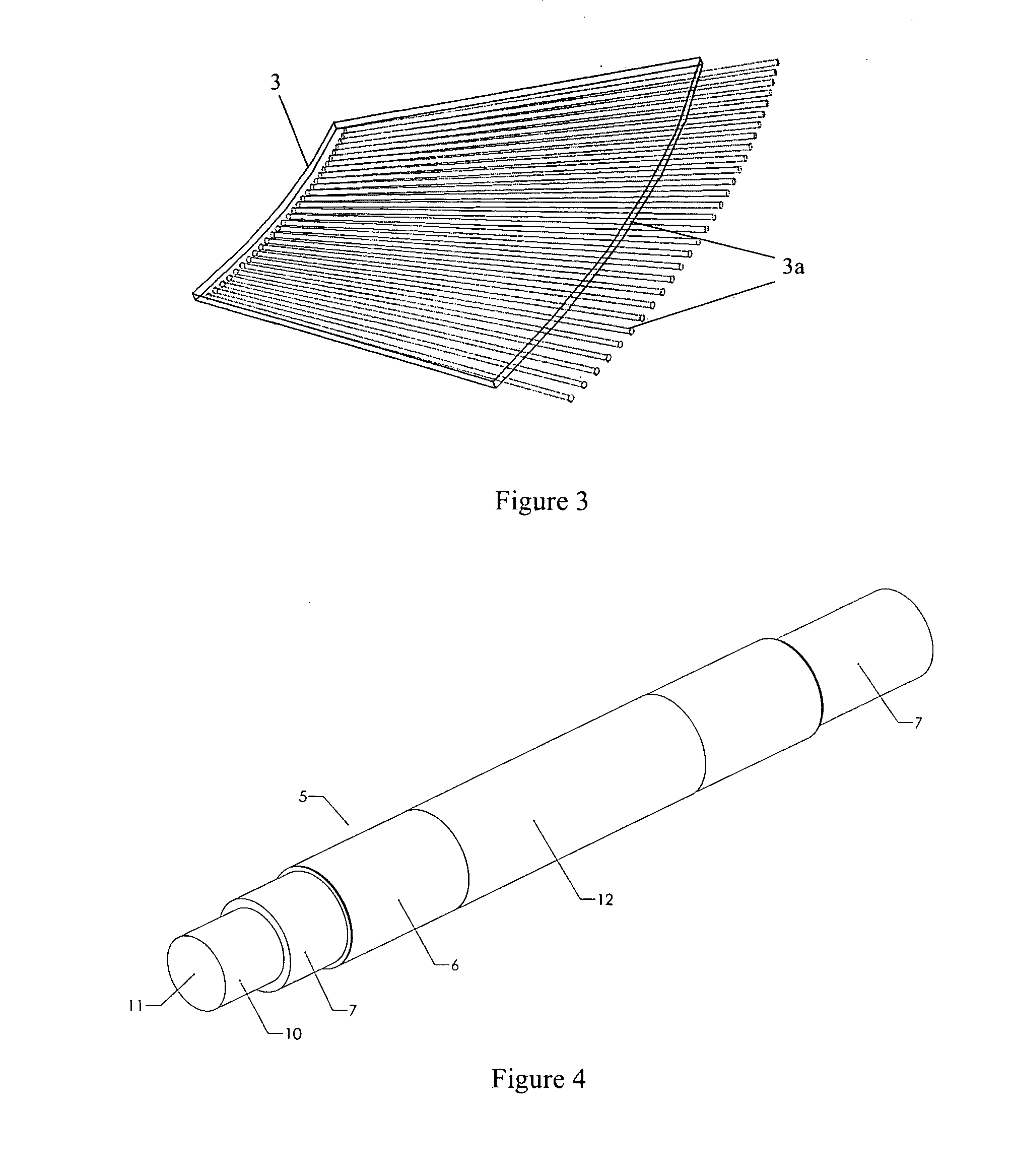Tubular electrical machines
- Summary
- Abstract
- Description
- Claims
- Application Information
AI Technical Summary
Benefits of technology
Problems solved by technology
Method used
Image
Examples
Embodiment Construction
[0051] A first embodiment of a tubular machine according to the present invention will now be explained with reference to FIGS. 1 to 6. In this first embodiment a series of axially spaced armature coils 1 are contained in a tube-shaped radially outer member 2. The armature coils 1 are made of non-superconducting wire and are supported on a non-magnetic non-conducting structure. Since there are no magnetic teeth to guide the flux around the armature coils 1 they need to be stranded and transposed to avoid eddy current losses, which could be achieved by using litz wire, for example. A typical diameter for the armature coils 1 would be 700 mm. As a result of the high current density in the superconducting coils 4 there is no need for a magnetic core to be associated with the armature coils 1. The individual armature coils 1 are connected together to form a three-phase AC armature winding that is attached to a main power circuit connection (not shown). They are separated from each other...
PUM
 Login to View More
Login to View More Abstract
Description
Claims
Application Information
 Login to View More
Login to View More - R&D
- Intellectual Property
- Life Sciences
- Materials
- Tech Scout
- Unparalleled Data Quality
- Higher Quality Content
- 60% Fewer Hallucinations
Browse by: Latest US Patents, China's latest patents, Technical Efficacy Thesaurus, Application Domain, Technology Topic, Popular Technical Reports.
© 2025 PatSnap. All rights reserved.Legal|Privacy policy|Modern Slavery Act Transparency Statement|Sitemap|About US| Contact US: help@patsnap.com



